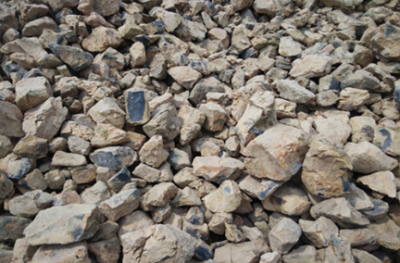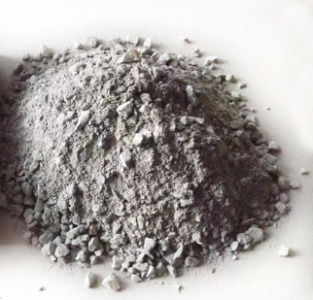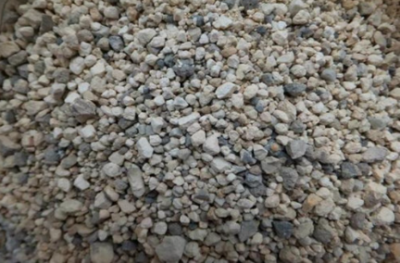In industrial production and high-temperature technology applications, refractories play a crucial role. They can withstand extremely high temperatures, protecting equipment and personal safety. So, what raw materials are these amazing refractories made of?
Refractory material
Refractory raw materials, as an indispensable basis for the production of refractory materials, their quality and selection are directly related to the performance and cost of refractory products. Most of these raw materials are derived from natural minerals, such as fireclay, bauxite, silica, etc., each of which contains specific fire resistance properties. However, with the increasing requirements for refractory performance, industrial raw materials and synthetic raw materials, such as industrial alumina, synthetic mullite, etc., also occupy an increasingly important position in production. According to their chemical properties, these raw materials can be carefully divided into acidic, alkaline and neutral refractory raw materials. If it is distinguished from the source, it can be divided into natural mineral raw materials and synthetic raw materials. In the actual production process, people are more accustomed to summarize the raw materials of refractory materials into two categories: main raw materials and auxiliary raw materials.
Whether it is a gift from nature or the crystallization of human technology, each refractory raw material must meet specific standards. From a mineralogical point of view, the raw material must have sufficient refractoriness to ensure the high temperature resistance of the final product. From a process point of view, raw materials need to meet the basic requirements of the production process to ensure the smooth progress of the production process. In order to better understand and apply these raw materials, we usually classify them as aluminum-silicon refractory raw materials, alkaline refractory raw materials, thermal insulation refractory raw materials, etc. Each class of raw materials has its own unique properties and application areas, which together form a solid foundation for refractory production.
Siliceous raw materials play an important role in the field of refractories. Silicon brick is directly made of silica, silica here is actually gangue quartz, quartzite, flint and sandstone and other materials collectively. The main chemical component of silica is silicon dioxide (SiO2), and the rest is regarded as impurities. For refractories, siliceous raw materials are mainly divided into two categories: crystalline rubble and cemented silica. Both types of raw materials are favored for their high silicon content and excellent fire resistance, and are essential ingredients in the manufacture of high-quality refractories. By carefully selecting and treating these siliceous raw materials, we can produce superior refractory products to meet the needs of a wide range of high-temperature industrial environments.
Clay material
Clay raw materials play an important role in the production of refractory materials, and refractory clay is the key raw material for the manufacture of aluminum silicate refractory materials. These clays need to meet the requirements of a refractoriness higher than 1580 ° C, including a variety of hard clay, soft (or semi-soft) clay and clay shale, which are collectively referred to as fireclay. The composition of natural fireclay is quite complex, it is mainly based on clay minerals, especially kaolinite (Al2O3·2SiO2·2H2O) as the main composition. This clay not only contains the main component of water-containing silicates, but also a mixture of free quartz, pyrite, rutile and organic matter, forming a complex mixture. According to the formation conditions and processes of clay, we can divide it into two kinds: primary clay and secondary clay. Primary clays are clays formed directly in situ from parent rocks (such as feldspar) after weathering. Secondary clays, also known as drift clays, are formed when the original clay is transferred to other places and redeposited under the action of natural forces.
In the refractory industry, the applied fireclay is mainly divided into two categories, each with its own characteristics and wide use. The first is hard clay, which is characterized by its tight organization, high hardness, very fine particles, and it is not easy to disperse after encountering water, so its plasticity is relatively low. From the appearance, the hard clay is usually a light gray, gray or gray, its cross section shows a shell, some of the surface also has a smooth touch. However, this clay is also susceptible to weathering and breaks into small pieces. The other type is soft (or semi-soft) clay, which usually exists as soil mass, relatively soft tissue, and therefore has good plasticity. Unlike hard clays, soft clays vary widely in color, depending on the type and amount of impurities they contain. Their colors range from gray, dark gray to black, and some even appear purple, pale red, or white. This variety of color characteristics also makes soft clay has a unique application value in the field of refractory materials.
High aluminum material
(1) Bauxite

Bauxite, also known as high bauxite or bauxite, is a key raw material in the production of many refractory materials. Among them, high aluminum clinker with Al2O3 content as high as 88%-90% is an indispensable component in the production of subwhite corundum; Alumina is the raw material for producing materials such as white corundum and dense corundum. This ore mainly contains two minerals, diaspore (Al2O3·H2O) and tridiaspore (Al2O3·3H2O). According to the mineral composition of bauxite in China, it can be divided into three types: Boehmite-kaolinite type (DK), Boehmite-kaolinite type (BK) and boehmite-pyrophyllite type (DP). Among these three types, DK type bauxite is the most widely used.
(2) sintered corundum and fused corundum

Sintered corundum and fused corundum are synthetic corundum materials, and their production methods have their own characteristics. Fused corundum is mainly made of industrial alumina or high bauxite as the main raw material, which is melted at high temperature in electric arc furnace. This method ensures high purity and excellent properties of corundum. The sintered corundum is the plate alumina obtained by sintering process, and its production process includes calcination, fine grinding, pelleting and firing.
(3) Mullite

Mullite, a kind of refractory raw material mainly composed of 3Al2O3·2SiO2 crystalline phase, occupies an important position in the field of refractory materials. This material can be divided into natural mullite and synthetic mullite two categories, but natural mullite resources are scarce, so in most cases, we use synthetic methods. Mullite is known for its stable chemical properties, and is not even soluble in hydrofluoric acid, showing its excellent chemical inertia. It is worth mentioning that it has excellent high temperature mechanical and high temperature thermal properties, which makes the synthetic mullite and its products perform well in many aspects: high density and high purity ensure the uniform and reliable quality; It can still maintain high structural strength under high temperature environment, which is due to its low creep rate and small thermal expansion rate. At the same time, strong resistance to chemical erosion and excellent thermal shock resistance further enhance the durability of mullite under extreme working conditions.
(4) sillimanite group minerals
Sillimanite group minerals, including kyanite, andalusite and sillimanite, are often affectionately referred to as the “three stones” in the industry. Although the three minerals have the same chemical composition, they are classified as homogeneous crystals because of their different crystal structures. When they are heated to high temperatures, they are collectively converted to mullite and produce a small amount of molten SiO2, which is accompanied by an expansion of volume.
However, due to the different degree of expansion of the “three stones” during the heating process, their direct application is also different. Because of its relatively small volume change, andalusite can be used directly as raw material, whether it is used for brick making or as an additive. In contrast, sillimanite and kyanite are more often added to the ingredients in the form of expansion agents, especially in the amorphous refractory materials are more widely used. If they are to be used to make bricks, they need to be calcined to obtain clinker, especially kyanite, which must be used after calcining mature materials. This different application fully demonstrates the diversity and flexibility of “three stones” in the field of refractories.
The above are commonly used refractory raw materials, with the innovation of refractory technology, the types of raw materials are more diverse, especially in recent years, because of a series of reasons such as environmental problems and raw ore resources, and continue to develop better performance of artificial synthetic materials and more environmentally friendly resource renewable raw materials
